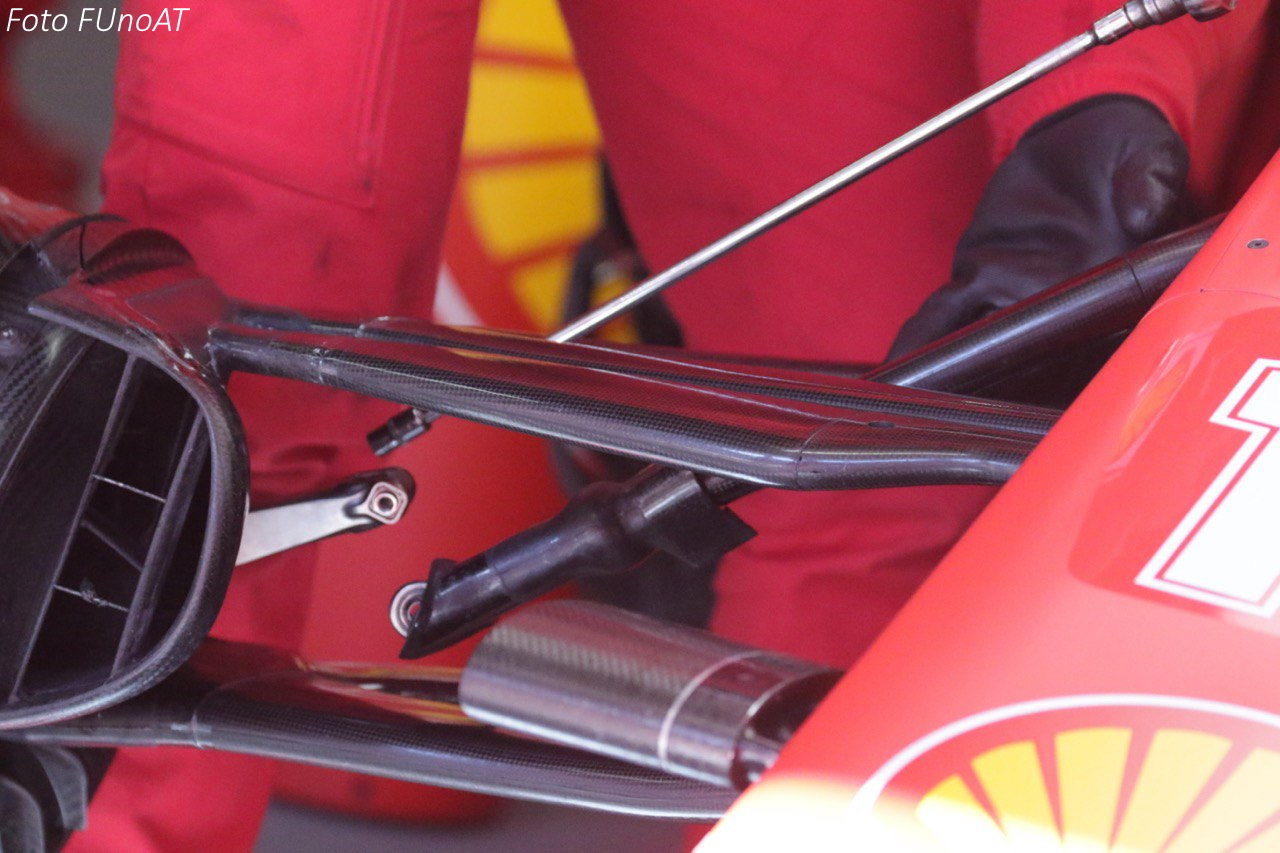Yes. Beautiful.
An imaginary line through the pushrod roughly aligns to the end joint of the lower control arm as suspected. At least in this straight position.
The push rod is in compression. The torsional spring is trying to push it down against the weight of the car, the downforce, any force from bumps, roll bar forces... And the opposite is happening from the point of view of the wheel hub.
Scenario:
Straight line braking from high speed.. The torsional spring at the bell crank is "compressed" (really twisted in whichever direction lower the car)
The pushrod ends are in position A and B respectively. A is at the knuckle at the upright, B is at the bell crank.
Line of action of the pusrod goes is still aligned to the lower control arm joint since the steering is neutral.
The driver then steers into the corner. The upright rotates. The pushrod knuckle moves with the steer induced rotation of the upright. The line of action of the pushrod is now eccentric to the axis of rotation of the hub. The torsion bar untwists momentarily since push rod knukle at point A is moving away from it unoading it. Since all forces will try to balance themselves, all those downward forces acting on the supension will start to load up the torsion spring again almost immediately, pushing down that corner of the car to a lower ride height.



